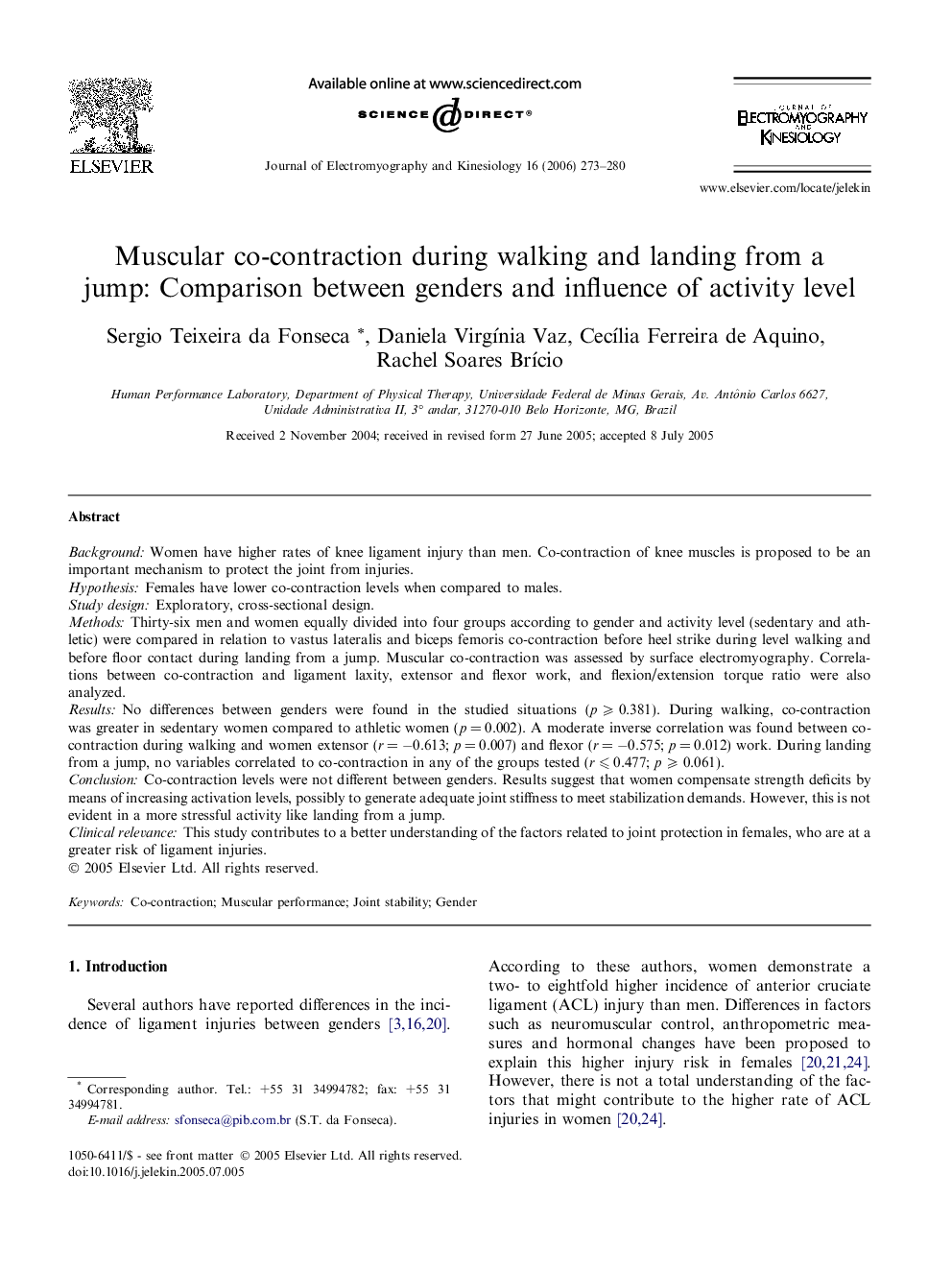| Article ID | Journal | Published Year | Pages | File Type |
|---|---|---|---|---|
| 4065794 | Journal of Electromyography and Kinesiology | 2006 | 8 Pages |
BackgroundWomen have higher rates of knee ligament injury than men. Co-contraction of knee muscles is proposed to be an important mechanism to protect the joint from injuries.HypothesisFemales have lower co-contraction levels when compared to males.Study designExploratory, cross-sectional design.MethodsThirty-six men and women equally divided into four groups according to gender and activity level (sedentary and athletic) were compared in relation to vastus lateralis and biceps femoris co-contraction before heel strike during level walking and before floor contact during landing from a jump. Muscular co-contraction was assessed by surface electromyography. Correlations between co-contraction and ligament laxity, extensor and flexor work, and flexion/extension torque ratio were also analyzed.ResultsNo differences between genders were found in the studied situations (p ⩾ 0.381). During walking, co-contraction was greater in sedentary women compared to athletic women (p = 0.002). A moderate inverse correlation was found between co-contraction during walking and women extensor (r = −0.613; p = 0.007) and flexor (r = −0.575; p = 0.012) work. During landing from a jump, no variables correlated to co-contraction in any of the groups tested (r ⩽ 0.477; p ⩾ 0.061).ConclusionCo-contraction levels were not different between genders. Results suggest that women compensate strength deficits by means of increasing activation levels, possibly to generate adequate joint stiffness to meet stabilization demands. However, this is not evident in a more stressful activity like landing from a jump.Clinical relevanceThis study contributes to a better understanding of the factors related to joint protection in females, who are at a greater risk of ligament injuries.
